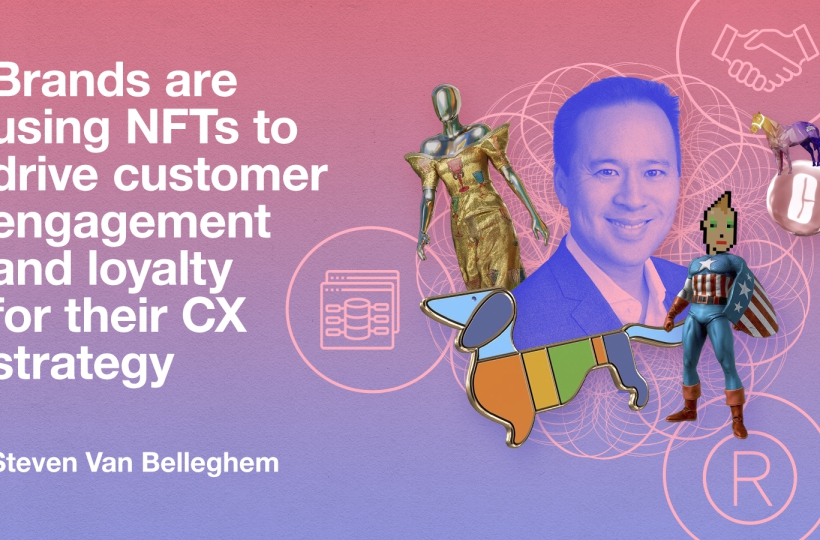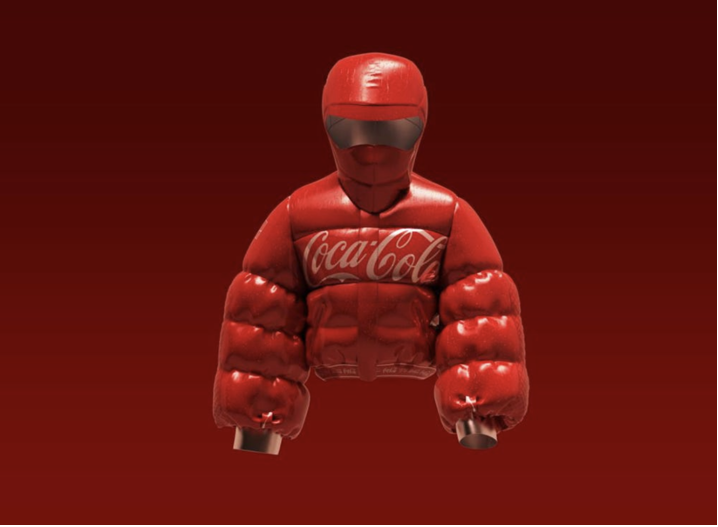My interview with Jeremiah Owyang: Brands are using NFTs to Drive Customer Engagement and Loyalty for their CX Strategy

Driving loyalty
So, NFTs can be art, video, music, or animations that customers can purchase to access perks, join communities, or resell the asset. I talked with Jeremiah about how the NFT craze has been hot during the last few quarters of 2021, as wealthy crypto investors are collecting rare digital art, that often dramatically increases in value, or grants utility to premium online experiences, and/or is a ticket to an elite community of other NFT holders. Jeremiah, too, sees marketers increasingly adopt NFT technology to connect to their customers to drive engagement and loyalty. Brands tend to follow the latest consumer trends, and NFTs are no exception here. The evolution makes a lot of sense, of course: “with quarantine reducing the number of people visiting stores or attending events, humans sought other ways to connect with experiences they are passionate about”, as Jeremiah explained.
So NFTs are hot. But they also aren’t. As Jeremiah quipped: “Go up to anyone on the street and ask if they want to buy your NFT and you may get arrested for drug solicitation”. Still very few people know what NFTs (really) are and the fact that users need to hold Ethereum and understand how to use crypto wallets is still a big stumbling block for adoption.
Part of the Web 3.0 Trend:
Jeremiah also went on to explain how NFTs are a significant part of the Web 3.0 trend, where consumers and citizens are in charge of their own data, identity, and monetization. Rather than rely on centralized platforms, the crowd is empowered through decentralized technologies to build, manage, and own the internet they are creating. They are using powerful technologies such as crypto currencies, where they can create their own powerful economies, social tokens to facilitate value among a community or online creators, or creating and trading NFTs.
So what’s the difference with the former social media era (Web 2.0) and the sharing economy? Well, in that paradigm, the people were promised they’d have control over their data and monetization. In reality, though, the technology platforms became centralized and power was relegated to a few people. But now, during the pandemic when people are rethinking their relationships with institutions, they are using new Web 3.0 technologies to claim back their identity and their data.
Jeremiah is also a great source of top concrete examples and cases when it comes to new trends, which is exactly why I love talking to him so much. We discussed Coca-Cola, for instance, selling a handful of unique digital NFT art to fans, including a cooler, a jacket, and a unique sound experience for $500k or 217$ ETH (ETH or Ether is the transactional token that facilitates operations on the Ethereum network) resulting in press, media, and of course, new revenues from digital assets.
Above: Coca-Cola offered a virtual jacket as an NFT to their fans, it sold, as part of a campaign for a cause for over $500k USD.
Beer brand Stella Artois, then, has launched a campaign by auctioning off fifty rare horses in conjunction with the summer racing schedule. This wasn’t just a static art sale, though. There’s a digital race track, which offers a virtual game, and winners receive a sliver of ETH. Also, if you have ever collected the Hot Wheels cars, you know the community is very enthusiastic about owning, racing, and enjoying these collectibles. So it’s a smart move from Mattel to launch a campaign which offered three digital Hot Wheels NFTs (only 1 quantity each) which sold for a handful of ETH each. Luxury brand Dolce & Gabbana, in its turn, launched “Collezione Genesi” an NFTs collection that features items personally designed by the co-founders Domenico Dolce and Stefano Gabbana. The project launched on August 28th, 2021, in parallel with their real world runway show in Venice, Italy. Visa has acquired a famed CryptoPunk for $150k, waking up the financial services markets to the possibilities. It will use this NFT in their digital museum as an artifact and while they didn’t design and launch their own, this is a notable sign from a leading financial services company. The largest entertainment brand in the world, Disney Inc, has also launched numerous Marvel NFTs on the Veve platform in summer 2021. They announced that the relatively quiet Veve exchange will connect to the Ethereum network in Oct 2021, which may lead to greater adoption of these historic NFTs.
We talked about much more notable case examples like how the Olympics launched NFT commemorative pins in June, 2021 or how Clinique’s first NFT ties to loyalty and products as uses expand in Oct, 2021 and how French Beauty House Guerlain Presents Energy-Efficient Tezos NFTs At The International Contemporary Art Fair In Paris in Oct, 2021. Though all of this is still happening in the margins, and often more gimmick than anything else, the examples keep piling up. This trend is clearly not going to go away.
Owning a piece of the brand
For Jeremiah, it’s clear that “the many large brands who have launched NFTs are engaging their customers, by enabling them to own a piece of the brand”. It’s that latter ownership part that I’m most excited about when it comes to NFTs: they really involve the customer, who then becomes an active part of the exchange instead of a passive, receiving one. Customers with an NFT stake in a company have a shared interest: if the company does well, the value of the NFT will rise and then they will do well too. If they win, you win. If they lose, you do too. And as the customers now benefit when the brand performs better, they will therefore become their ambassador. That’s really exciting, game changing stuff. (Read my piece about the branded economy here.)
No surprise that Jeremiah believes that there will be so many NFT projects launching in 2022 that it will be difficult for brands to stand out in a crowded market. He advises brands to act now and take advantage of the fact that they will be early movers in the market. Whatever the case, this might be the best time to start experimenting with NFTs to really understand what their potential could be.
